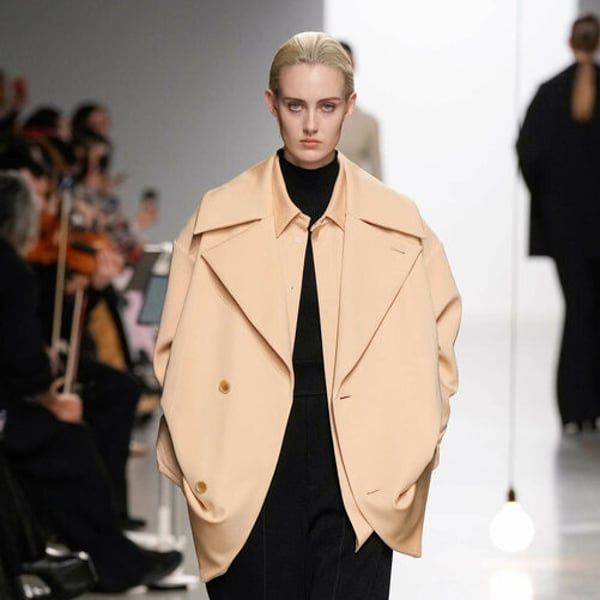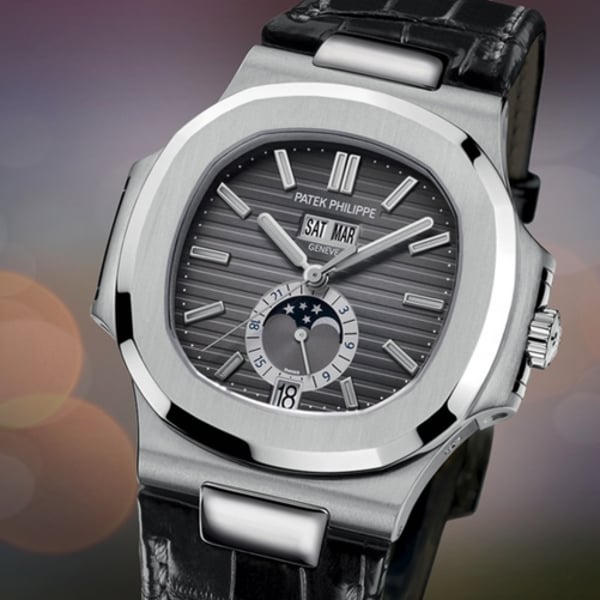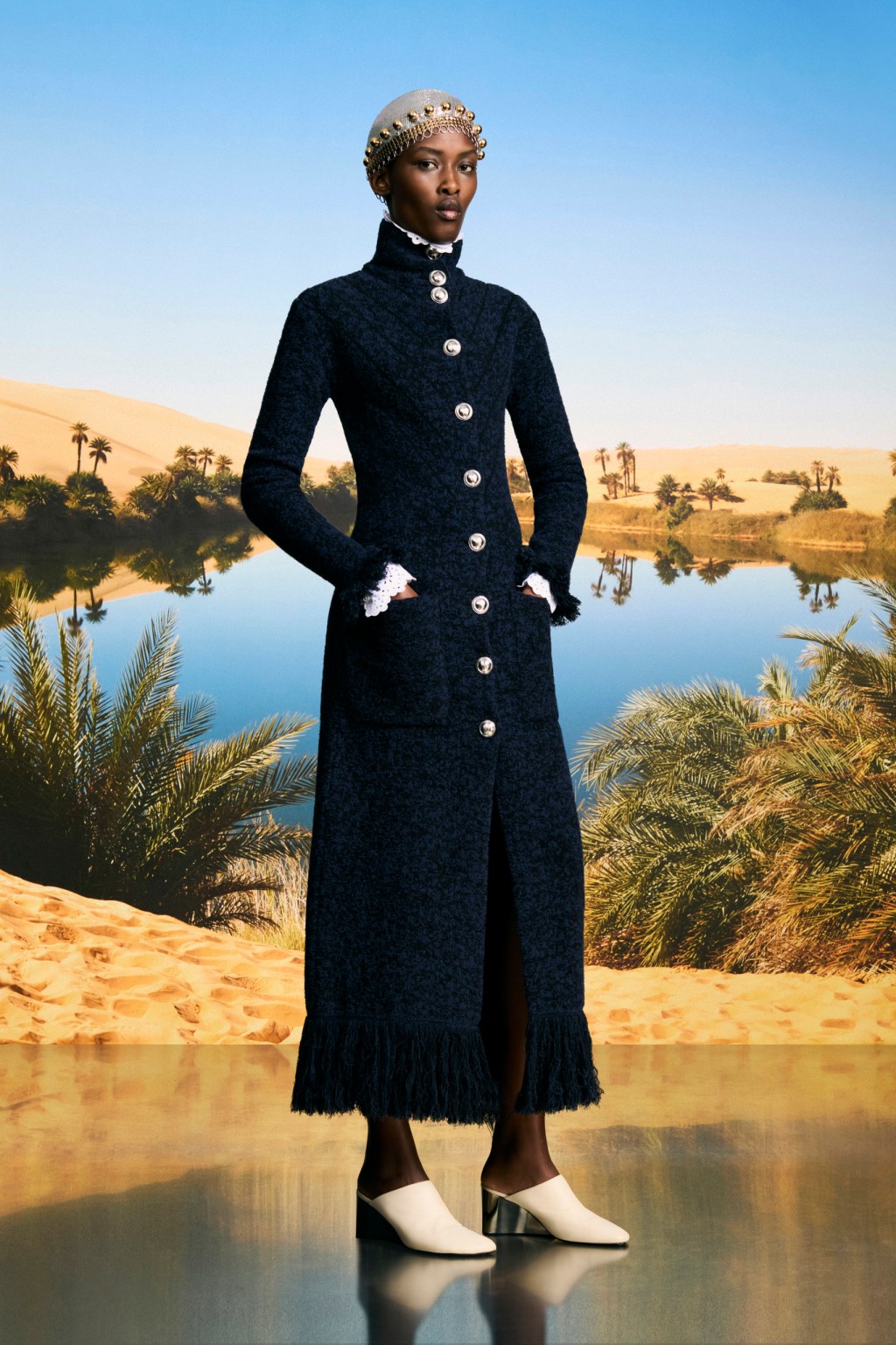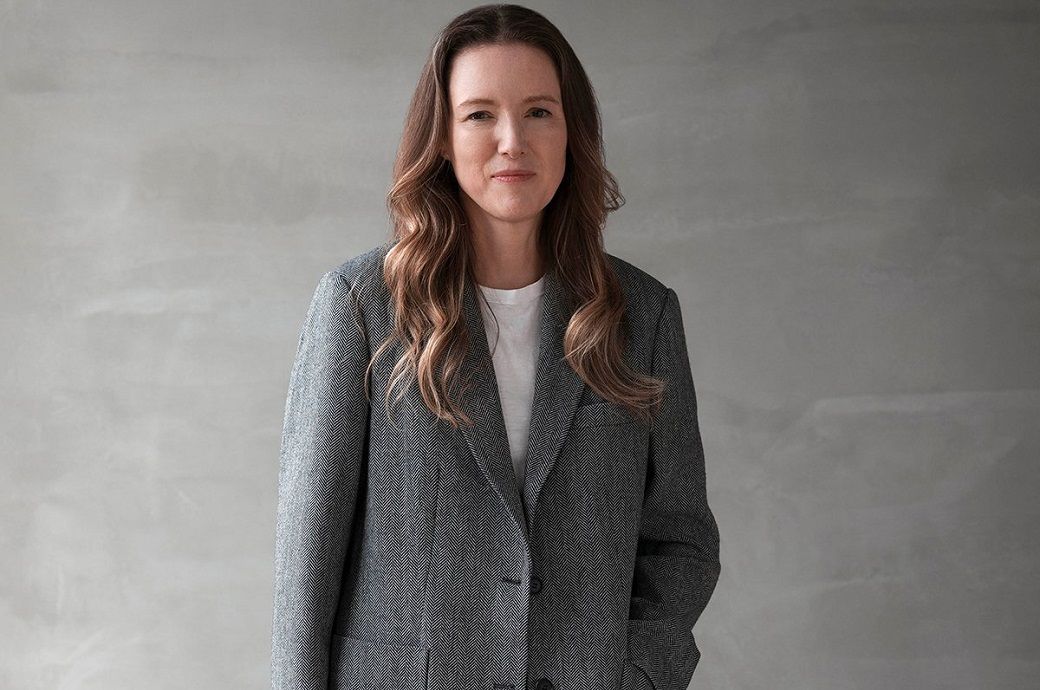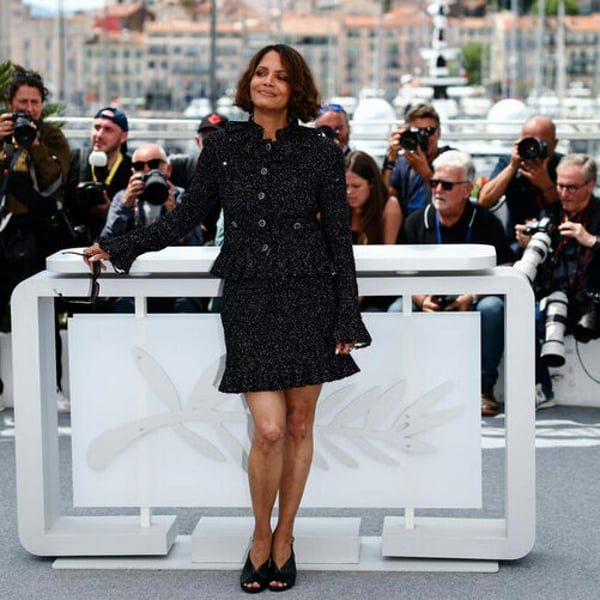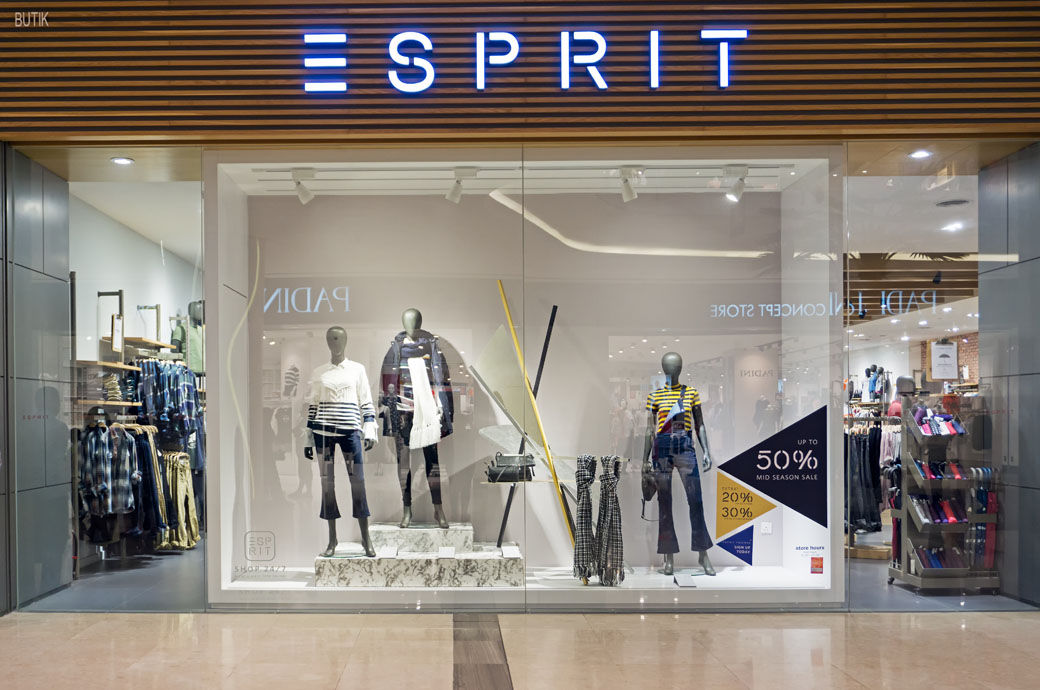The first day of the Paris women's ready-to-wear show focused attention on young designers. On Monday, three shows were inaugurated that express three radically different visions. The Belgian designer Marie Adam-Leenaerdt was conceptual, the American brand Vaquera provocative and the Japanese designer Yusuke Takahashi debuted in Paris with his label CFCL, a poetic minimalist.
It passed with flying colors! Yusuke Takahashi seduced the audience with a show of great elegance and intensity. The tension increased from the beginning with a contemporary composition by Hristina Šušak, performed live by a string quartet placed in the center of the stage. The musicians accompany their sudden, escalating musical tirades with increasingly loud howls, while a drum sets the cadence during pauses, like the beat of a heart.
The models' quick steps also fill the room with their echoes. The show alternates moments of tension and (musical) relaxation, just like the collection, made entirely of knitwear, that marks the day.
From sober and refined suits, jackets, peacoats and duffle coats of refined design, to transparent dresses woven with ultra-fine threads, the wardrobe then moves on to more functional garments, ending on a festive note with wavy dresses in large red tones and white stripes, others with velvet effect and a series of outfits woven with lurex or decorated with large sequins.
Knitwear specialist Yusuke Takahash founded his Clothing For Contemporary Life (CFCL) brand in 2020, the same year he left Issey Miyake. Freshly graduated from Bunka Fashion Graduate University in 2010, he immediately joined the famous Japanese fashion house. In 2013, at the age of 27, he rose to prominence when he was named artistic director of Issey Miyake Men, a position he held for seven years.
For his brand, he has developed a 3D knitting technology that combines traditional techniques with digital technology, allowing him to significantly reduce waste. He also uses recycled threads.

Marie Adam Leenaerdt entered the official Paris catwalk calendar last season. For her second show she presented a very interesting collection, with a peculiar and surreal touch and a real reflection on clothing. This season, the Belgian designer played with the skirt theme. The skirt is a staple of women's dressing rooms and is common in boutiques such as the venue chosen for the show, the recently closed former Kookaï store on rue de Rennes.
The skirts were reworked in unexpected proportions. Several models, too wide, tightened and constricted at the waist, while excess fabric protruded from the sides. A tweed skirt with large pleats is interrupted and transformed into a wrap skirt, exposing the lining. Several satin skirt linings tangle together, transforming into a minidress with a train, while a petticoat transforms into a top.
“I've revisited all the archetypes of the skirt, whether velvet, houndstooth, tailored or otherwise, and reworked them into new pieces. Like the puffed skirt transformed into a big ball gown,” she explains. This piece takes over the rest of the closet. Here it metamorphoses into a coat, the waist of the skirt fitting around the neck in a boat neck shape. The pockets have slits to let the arms pass through, the waistband becomes a ribbon that is passed through loops sewn into the wide collar, and the zipper closure at the lower back is now positioned below the collar.
Similarly, the long white denim skirt, raised to the neck, becomes a dress, with its two back pockets resting on the shoulder blades. The leather skirt takes on new life as a cape. The pleated skirt was split to form a matching overlay top and skirt. The designer multiplied the clever details, such as the two rows of loops to tie a high-waisted or low-waisted coat. As for the classic button closure, this was abandoned, with the lapels of jackets and coats found in the center to be joined vertically.

The designer uses numerous clever details, such as two rows of belt loops to tie a high- or low-waisted coat. As for the classic buttoning of jackets and coats, this has been abandoned, leaving the lapels gathered in the center and joined vertically, as is the case with the buttons facing the sides. A construction that has become his signature? Marie Adam-Leenaerdt has also made a name for herself in accessories, with huge three-in-one bags, shoulder straps that can be removed to serve as belts, and seven-league boots that can be completely unzipped.
Graduated from the Ecole de La Cambre in 2020, the 28-year-old worked for six months at Balenciaga before returning to Brussels to create her own brand. “I want to continue with the heritage of Belgian fashion. The conceptual side of it is very important to me. I am also inspired by conceptual art,” confesses the designer, one of the semi-finalists for the LVMH Prize 2024.
Working on cuts and constructions, she prefers timeless fashion made to last, with very beautiful materials. Launched in 2022, its brand is distributed in fifteen multi-brand stores around the world, including Stijl in Brussels, Net-a-porter, Ssense, Matches Fashion and Bergdorf Goodman.

As always, Vaquera plays provocation with a collection simply titled “Dinero.” The two New York designers, Bryn Taubensee and Patric DiCaprio, who launched their brand in 2013, follow the mafia wife trend, imagining fatal mafia wives in super sexy and ostentatious outfits, with big green bills shining all over them. And don't forget about faux fur and leopard prints.
With stiletto heels, stoles, veiled bibs and fishnet stockings, with a large belt around the waist, the Cowgirl woman shows off unequivocal outfits, without fear of bordering on the vulgar. She reveals her bare breasts under a tulle top or in the two oval openings of a bodysuit. She also wore jeans or open skirts revealing her underwear, while in some outfits and T-shirts she wore bras with conical breasts that protruded like shells.
Copyright © 2024 FashionNetwork.com All rights reserved.

